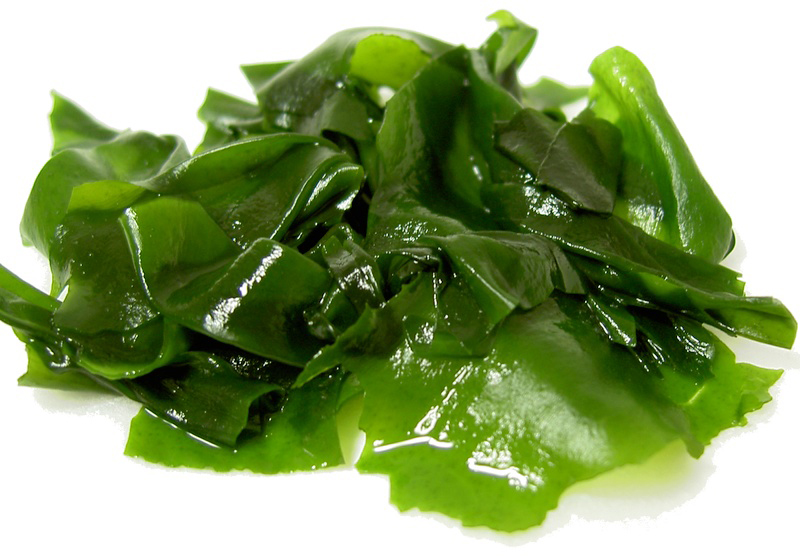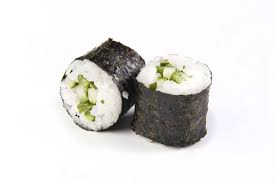Seaweeds
It’s important to add seaweeds to our diet, for its nutritional properties and because they are also taste incredibly well, properly prepared. They have many minerals and trace elements, in addition to an alginic acid that helps us to expel heavy metals.
The seaweeds are the great unknown today in the family kitchens, and on the contrary, getting more and more used by international chefs.
In addition to their pleasant taste, if they are cooked and used in an appropriate way, they provide between 10 and 20 times more minerals than the vegetables we cook and use. They remineralize us and give us energy to face the rhythm of work and daily life, often loaded with stress.
They contain iodine, calcium, iron, potassium, magnesium and a large amount of trace elements, which are required for the body to perform certain enzymatic reactions.
Thanks to its high content of minerals, they make an alkaline effect on the body. Knowing how to cook them how to know the quantities, their innumerable properties, as well as the quantities to take can interest you, and much!

KOMBU

In addition to the general characteristics of seaweeds, it has glutamic acid, a substance that softens the fibers of other foods (particularly beans and pulses in general). They have to be cooked at least 40 minutes, because they have a rough texture. It has a lot of minerals, so it has to be used twice a week.

It is suitable for soups, stews… but once cooked, we can make delicious chips with it. It is easy to use, because it does not require much elaboration. For example, if you drink filtered water, it is interesting to add this seaweed to your broths, soups, etc. to remineralize the water.
WAKAME

It’s from the same family as the kombu seaweed. It’s rich in calcium and contains high levels of B and C vitamins. It also has the capacity, (like the kombu) to soften fibers, but as it has less amount of iodine, its use could be more regular.
The wakame seaweed, as we will see later, can be eaten every day if you don’t have hyperthyroidism problems, 2 cm of this seaweed per person and per day. It contains a lot of calcium, cleans the blood, among other of its many properties: it reduces cholesterol, contains magnesium, and expels nicotine from the blood (for smokers).

You can use it soaked 5 minutes in water and then cut into strips in salad, in soups (just like kombu, only that it is cooked much earlier), as stuffed with cannelloni, stewed with vegetables…
DULSE

It has a large amount of vitamin C and iron, therefore, they are especially suitable for anemia. The recommended quantity is 2 times per week, in salads and soups.

It’s a soft seaweed and easy to prepare, you just have to soak it for 5 minutes and it’s ready to eat. The way I like it most is in salads, marinated with orange juice and lemon.
ARAME

It has a lot of minerals, especially calcium. It contains a natural sugar called mannitol, which helps us to maintain stable the glucose level in the blood. It is also suitable for nervous system problems.
Very proper to give elasticity to the cardiovascular system and for anemia. Also to lower blood pressure. Good for the reproductive system of women.

In the kitchen, it’s better to soak it for 10 minutes and sauté a few minutes with a Little bit of garlic to make it really delicious.
For their lightness, use them in cannelloni, pizzas, empanadillas, creps or spring rolls. Or also cooked with sweet vegetables: carrots, leeks, corn, green beans … or in salads with a good dressing or vinagrette.
HIJIKI O HIZIKI

It’s the seaweed that has the highest amount of calcium. 14 times more calcium than cow’s milk, and more bioavailable than it, which strengthens bones and teeth.
Helps to undo the mucus produced by heat excess.
Due to the large amount of minerals it has, it’s enough to consume it twice a week.
Proper for the the nervous system.

As it has a strong taste of the sea, in addition to soaking it 15 minutes, you have to cook another 15 minutes to soften it and to lose its flavor a little. Sauteed with asparagus, warm salads … it’s delicious!
COCHAYUYO

It’s the seaweed that contains less iodine, therefore, it is suitable for people who have thyroid problems. It contains N-acetyl-cysteine, a component that helps to dissolve mucus.
It tempers the organism and moistens it.
It also has high magnesium content.

To use it, it must be soaked in boiling water. Useful for sauteed vegetables, stuffed cannelloni, wraps … you can get a more “al dente” texture by soaking it less time. It is a seaweed that has almost no flavour, therefore, you can give enhance its flavour by marinating it with citric fruits or simply marinated with a vegetable broth and spices.
NORI

Perhaps it is the best known and used seaweed because sushi is rolled in the nori seaweed.
It contains taurine, an amino acid necessary for the formation of bile, that intervenes in numerous liver functions, including facilitating the digestion of some difficult food. It also has beta-carotene, which promotes the protection of the skin and mucous membranes. It can be consumed daily.
It decreases arterial cholesterol also by amioacid taurine.
Very rich in proteins (almost 30%) in addition to containing calcium, iron and potassium, vitamin C and vitamins of group B.

It’s probably the best known seaweed, since it is used to make sushi, but it can have different uses: in salads, to mix it with guacamole, as a seasoning in vegetable creams …
AGAR-AGAR

A seaweed with a lot of soluble fiber, which helps fight constipation. But also as a soothing digestive mucosa because it acts like a gel.

Mainly in pastry as it gives the consistency of gelatin to liquid preparations. Therefore, to have the right consistency, you have to put six grams of agar per liter of liquid (milk, fruit juices …)
Another interesting option is to buy it in fibers and soak it, when it’s soft, you can marinate it and cut it into 2 cm strips for using in salads, etc.
© 2019 Todos los derechos reservados Aviso Legal
Diseñado por MJDolado
